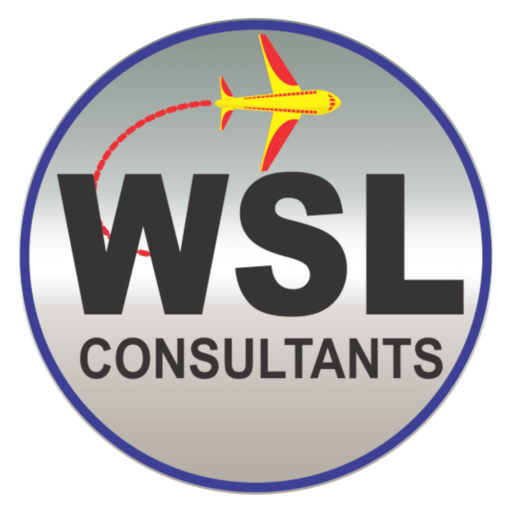Canada, with its breathtaking landscapes and vibrant cities, is a popular destination for visitors from around the world. Many individuals initially arrive on Visa for visit to Canada to explore the country’s beauty and opportunities. However, for those seeking to extend their stay and transition to a work permit, understanding the process is crucial.
Importance of Transitioning from Visit Visa to Work Permit
For many individuals visit to Canada on a temporary basis, the prospect of transitioning from a Visit Visa to a Work Permit can be a game-changer, offering an extended and immersive experience in the country. Understanding the importance of this transition is key for those seeking both professional growth and an extended stay in the Great White North.
1. Extended Stay:
Transitioning to a Work Permit allows individuals to extend their stay beyond the limitations of a Visa for visit to Canada. This extension is particularly valuable for those who have discovered new opportunities or wish to delve deeper into Canadian culture and lifestyle.
2. Professional Development:
A Work Permit opens doors to gainful employment, providing an avenue for professional development and hands-on experience in the Canadian job market. This opportunity not only enhances one’s skill set but also contributes to a global perspective on work practices.
3. Contributing to the Canadian Economy:
As a Work Permit holder, individuals actively contribute to the Canadian economy through their employment. This is not only beneficial for personal financial stability but also adds to the overall economic landscape for visit to Canada.
4. Networking and Building Connections:
Engaging in the workforce facilitates networking and the establishment of professional connections. These connections can prove invaluable for future career prospects and may even lead to long-term employment opportunities or entrepreneurship ventures.
5. Pathway to Permanent Residency:
One of the significant advantages of transitioning to a Work Permit is that it can serve as a stepping stone towards obtaining permanent residency in Canada. Many immigration programs prioritize individuals with Canadian work experience, making the transition a strategic move for those considering long-term settlement.
6. Enhanced Quality of Life:
Securing a Work Permit allows individuals to fully integrate into Canadian society, enjoying the benefits of local amenities, healthcare, and education. This contributes to an enhanced overall quality of life during the extended stay.
The transition from a Visa for visit to Canada to a Work Permit is not just a procedural shift; it’s a gateway to a host of opportunities. Whether seeking professional growth, contributing to the Canadian economy, or paving the way to permanent residency, this transition holds immense importance. Understanding and seizing this opportunity can turn a temporary visit into a transformative and enriching experience in the vibrant landscape of visit to Canada.
Eligibility Criteria for Transition in visit to Canada
Transitioning from a Visit Visa to a Work Permit in Canada involves specific eligibility criteria. Understanding these requirements is crucial for individuals looking to extend their stay and engage in gainful employment in the country.
1. Valid Visit Visa:
To be eligible for transitioning to a Work Permit, individuals must possess a valid Visa for visit to Canada. Ensure that the Visit Visa remains valid throughout the transition process.
2. Job Offer from a Canadian Employer:
A crucial criterion is obtaining a job offer from a Canadian employer. The job offer should align with the individual’s skills and qualifications, and the employer must be willing to support the Work Permit application.
3. Labor Market Impact Assessment (LMIA):
In many cases, a Labor Market Impact Assessment (LMIA) is required. This assessment ensures that hiring a foreign worker will not negatively impact the Canadian job market. The employer typically initiates the LMIA process.
4. Proof of Financial Stability:
Applicants must demonstrate financial stability to support themselves and any dependents during the transition period. This proof is vital, as it assures authorities that individuals will not be a burden on Canada’s social services.
5. Compliance with Visa Conditions:
Those seeking to transition to a Work Permit must have complied with all conditions of their Visa for visit to Canada. Adherence to visa conditions showcases a commitment to respecting Canadian laws and regulations.
6. Medical Examination and Security Clearance:
Applicants may be required to undergo a medical examination to ensure they meet health standards. Additionally, a security clearance is often necessary to ensure the safety and security of visit to Canada.
7. Skill and Education Requirements:
The individual’s skills and educational background should align with the requirements of the job offer. Relevant qualifications and experience contribute to the overall eligibility for a Work Permit.
8. Language Proficiency:
Adequate proficiency in English or French is essential. This requirement ensures effective communication in the workplace and the ability to integrate into Canadian society.
9. Duration of Work Permit:
The duration of the intended work must align with the terms specified in the job offer. It is essential to apply for a Work Permit that covers the entire period of employment.
Meeting these eligibility criteria is pivotal for a successful transition from a Visit Visa to a Work Permit in Canada. As individuals navigate this process, careful attention to each criterion ensures a smooth transition, opening doors to new opportunities and experiences in the Canadian workforce.
Steps to Transition
Understanding the process is key to a smooth transition. Collecting required documents, submitting a well-prepared application, and adhering to timelines are essential steps in this journey.
Common Challenges in Transition
Transitioning comes with its share of challenges. Language proficiency is often a hurdle, and navigating the competitive job market can be daunting. Additionally, understanding and fulfilling legal requirements pose another set of challenges.
Advantages of Transitioning
Despite challenges, the advantages of transitioning are immense. Increased job opportunities, the prospect of long-term residency, and enhanced economic stability make the effort worthwhile.
Tips for a Smooth Transition
Networking within the Canadian professional community, updating skills to meet market demands, and seeking professional advice can significantly contribute to a seamless transition.
Real-life Success Stories
To inspire and motivate, let’s explore real-life success stories of individuals who successfully transitioned from a visit visa to a work permit, achieving their career goals in Canada.
Conclusion
Transitioning from a Visa for visit to Canada to a Work Permit is a transformative journey. It not only broadens horizons but also sets the stage for a fulfilling and prosperous future. As you embark on this transition, remember that challenges are part of the process, but the rewards are well worth the effort.
FAQs
- How long does it take to transition from a visit visa to a work permit in Canada?
- The processing time varies, but it typically takes a few months. Factors such as the completeness of your application and current immigration workload can influence the timeline.
- Can I transition to a work permit without a job offer in Canada?
- While having a job offer enhances your chances, certain categories allow individuals to apply for a work permit without a job offer. Consulting with immigration professionals can provide tailored guidance.
- Is language proficiency a significant factor in the transition process?
- Yes, language proficiency is essential. Adequate knowledge of English or French is often required, and language proficiency tests may be part of the eligibility criteria.
- Are there specific industries with higher demand for workers in Canada?
- Yes, certain industries, such as healthcare, technology, and skilled trades, have a high demand for workers. Job opportunities in these sectors can facilitate a smoother transition.
- What happens if my visit visa expires during the transition process?
- It’s crucial to apply for a work permit before your visit visa expires. If approved, the work permit will allow you to continue staying and working in Canada legally.

